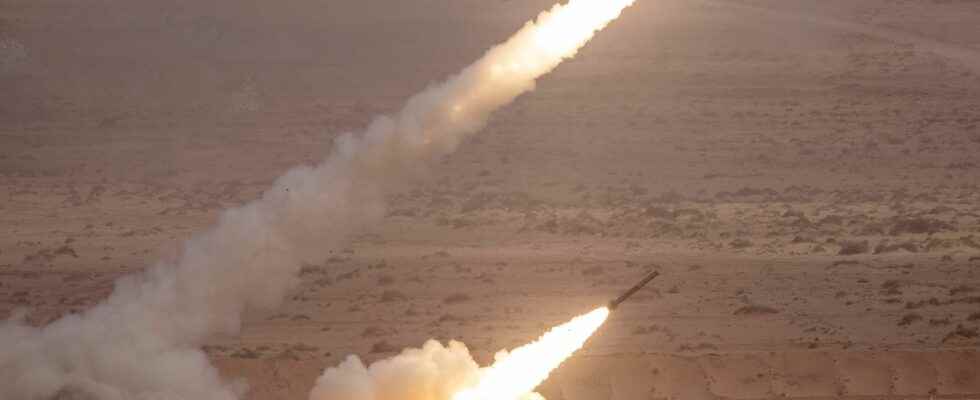After heavy tanks, will the next step in Western support for Ukraine be long-range weapons? According to information from the press agency Reuters published on Wednesday February 1, the United States would prepare a new aid of 2 billion dollars including for the first time small diameter bombs with land launcher (GLSDB) with a range of 150 kilometers. Manufactured by Boeing and Saab, these hover bombs can be launched from the ground from multiple rocket launchers, such as the Himars already possessed by kyiv forces. They would, however, almost double the range, the ammunition currently used being able to strike up to 80 kilometers.
A capacity development far from being anecdotal. “A range of 150 kilometers would allow the Ukrainian forces to reach extremely interesting targets, abounds Marc Chassillan, military engineer and specialist defense consultant. This would give them the possibility of hitting what is called the second level, that is to say that is, the reinforcement divisions, the logistics convoys, the ammunition depots, or even the command centers located well behind the front. A means of significantly disrupting the supply of resources to the Russian forces fighting further ahead. And at the same time reduce their effectiveness in combat. Propelled by a rocket engine, this guided rocket spreads its wings at altitude and can hover towards its target with precision to the nearest meter.
“New targets within reach of the Ukrainians”
Following a Russian strike that hit civilian areas in the town of Kostiantynivka in the Donetsk region on January 28, Volodymyr Zelensky reiterated his call for the delivery of such weapons. “Ukraine needs long-range missiles – in particular, to eliminate the possibility for the (Russian) occupiers to place their missile launchers somewhere far from the front line and to destroy Ukrainian cities, had– he hammered into one of his daily addresses. We will do everything in our power to get our partners to open up this vital supply – in particular, the supply of ATACMS and other similar weapons.”
For now, Washington has refused delivery of this other missile with a range of 300 kilometers. “The United States have repeatedly indicated that they do not want to provide missiles with too long a range, to prevent the Ukrainians from being able to strike deep inside Russian territory, points out Yohann Michel, researcher on defense issues at the International Institute for Strategic Studies (IISS) One of the fears is that these missiles are potentially able to hit weapons and equipment involved in the Russian nuclear deterrent, which would present a greater risk important climbing.” A risk that would be limited, de facto, by sending rockets capable of striking at 150 kilometers.
A weapon not yet produced
The distance covered would nevertheless put all the territories occupied by the Russians within range of Ukrainian fire, with the exception of the south-eastern part of Crimea. “Putting new targets within reach of the Ukrainians has a military interest in many areas, resumes Yohann Michel. shots away from the front lines while being less exposed.” Another advantage of the GLSDBs: their cost, estimated at 40,000 dollars per unit compared to one million for the ATACMS. On January 31, US President Joe Biden told reporters at the White House that he was “going to talk” to his Ukrainian counterpart about his requests for additional military aid.
On the Russian side, the Kremlin swept aside any change of course on Wednesday February 1 despite this new potential aid. These new weapons would lead “to a heightening of tensions, to an increase in the level of escalation”, Kremlin spokesman Dmitry Peskov told the press. “It would mean extra effort for us, but it won’t change the course of events, the special military operation will continue.” Not sure that such equipment is so painless for the Russian forces. “We have seen in the past that the Russians often had difficulty adapting to the new equipment received by the Ukrainians: after the appearance of the Himars, it took them a long time, for example, to move some of their logistics depots”, notes Yohann Michel.
In addition to waiting for official confirmation of the delivery of this type of rocket, however, remains the question of their number and that of delivery times. “Today this ammunition is not present in the American arsenal, so it will have to be manufactured, notes Marc Chassillan. This lack of stocks means that it will probably be necessary to wait several months before the Ukrainian forces can use them. ” Unlike the Ukrainians, the Russian forces are unlikely to be impatient.
